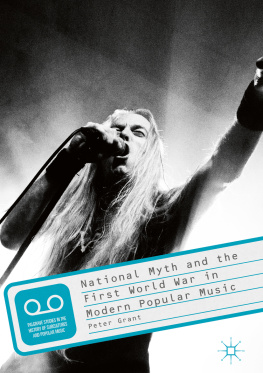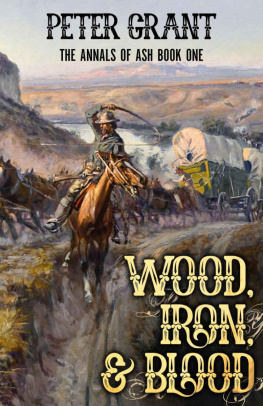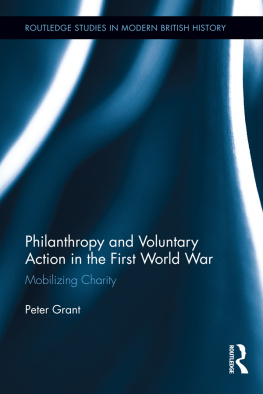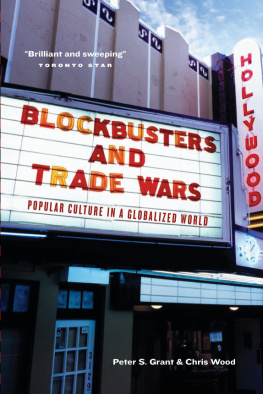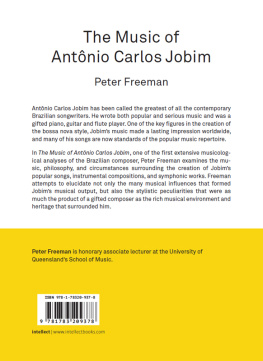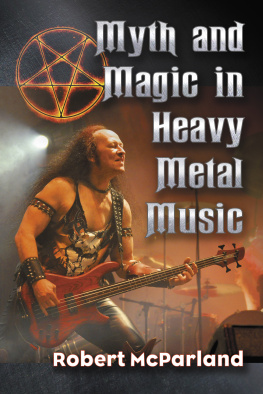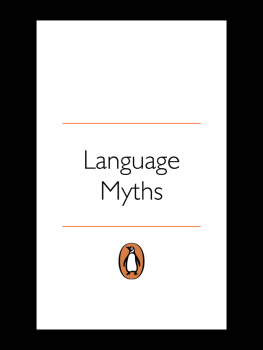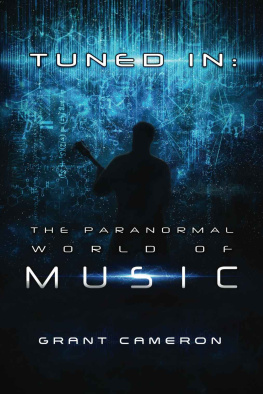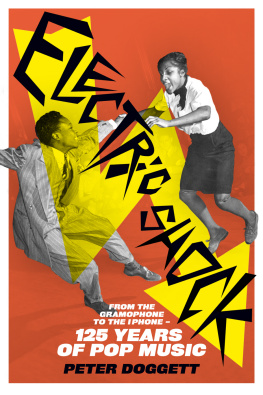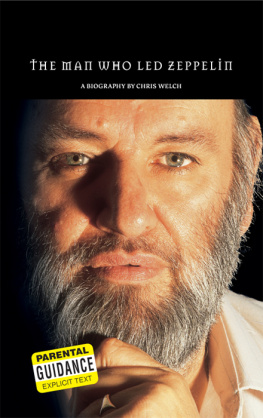1. Introduction
When PJ Harveys Let England Shake was released, Guardian music critic Alexis Petridis suggested that rock songwriters dont write much about the first world war (Petridis , p. 1).
Martin Stephen, one of the most perceptive writers on the poetry of the First World War, lamented that military history and literary criticism do not sit easily side by side (Stephen , p. xiv). Military historians are frequently appalled at the lack of knowledge of First World War battles and commanders demonstrated by cultural historians whilst their cultural counterparts are equally mystified by the military historians lack of understanding of key artistic texts from Wilfred Owen to Blackadder . This book seeks to find a balance and stimulate dialogue between them.
Approach and Structure
This study inevitably entails an inter-disciplinary approach as it covers both historical and musical analyses, the nature of myth and the importance of memory and remembrance in modern society. This means explaining something of the theoretical background to these topics. So Chapter , Bombazine Dolls and Orders from the Dead, identifies those artists whose approach is distinctive or radically alters the way we think about the War and its mythology. The final chapter considers how popular music is being deployed during the commemorations of the centenary of the War and draws some conclusions regarding the changing nature of national myth.
Definitions
I should define what I mean by popular music and how a composition qualifies for inclusion in this study. I refer broadly to all popular music produced since the advent of rock-and-roll in the late 1950s, including French chanson , jazz, folk, rock and its close relatives (for example progressive and psychedelic rock) and then the myriad of genres that have developed from rock including punk, industrial, rap, hip-hop and heavy metal and its more extreme derivatives. What is excluded is the music commonly referred to as classical. There is also a definitional issue regarding what to call each piece of music. I have decided to use the term song even though some of the pieces have no lyrics. I use War (with a capital W) when I mean the First World War and war (lower case) when war in general is meant. Titles of songs are given in single quotation marks, album titles in italics and on first mention of notable examples their date of first release and record label.
My main criteria for inclusion of a particular song is that the influence of the War, whether directly or through signifiers or references, is discernible in the title or lyrics. Here I follow the definition of Santanu Das in relation to First World War poetry when he suggests that to qualify the war does not have to be directly present or mentioned, but [] some context of the war has to be registered and evoked (Das , p. 9). So the Rolling Stones Sympathy for the Devil qualifies as it connects the War with the fall of the Romanovs, but Boney Ms Rasputin, which is solely about the mad monk, does not. One or two songs that are more about war in general are included because they reference the First World War in another way a good example being Paul McCartneys Pipes of Peace which makes no reference to the War but whose accompanying video depicted the 1914 Christmas Truce.
I also exclude songs written for the soundtracks of musicals, films or television shows; most cover versions of the same song, unless they add a new dimension; and new versions of songs composed or popular during the War itself unless they add something significantly new as do Bill Carrothers jazz album Armistice 1918 and Art Abscon(s) version of Roses of Picardy.
Musical Genres
Fabian Holt has pointed out that generic categories underpin all forms of culture yet genre in music is a highly contested area with some seeing genres as restrictive stereotypes that inhibit artistic expression (Holt , p. 5). Among these are the music adopted (chords, mode and so on); instrumentation (what instruments the band members play); the vocal style adopted by the singer(s); dress (including make-up and jewellery); performance (gestures on stage, body language); lyrical content and what kinds of words are used (slang or swearing for example) and visual symbols (album art, merchandise and, at live shows, lighting or props).
Though it is difficult to accurately describe the rules that constitute different genres we usually have no difficulty quickly determining the genre of a band or artist simply by looking at a photograph of them or picking up a copy of one of their albums (Fabbri , p. 12). This seems especially true of songs that have the First World War as a theme. Some artists eschew their usual styles when performing these specific songs (examples include Motrhead and Electrelane). All these provisos need bearing in mind but in most cases I have accepted the genre definition of the artists concerned or that of music critics reviewing the song. In a few cases I have allocated a song to a specific genre myself.
Music, Lyrics and Meaning
As Emma Hanna has pointed out in relation to The Great War on the Small Screen there are dangers when historians begin to analyse artistic creations. Just as some literary or film critics have a shaky understanding of history so many historians have an equally shaky or partial understanding of literature, film or music (Hanna ).
These and other writers have discussed the language of music and this raises the question as to where the meaning of a popular song lies. Is it in the music, the lyrics (if any), other factors (such as the nature of the performance or production), or a combination of these? This book has more to say on the lyrical content of songs than the music which, for example, means that instrumentals are covered less fully. My justification is twofold. Firstly the study is about the songs approach to the First World War and that is usually (though not exclusively) clearer in the lyrics than the music. Secondly, though there are problems in adopting a socio-cultural approach, there are even more in adopting a purely musicological one. As Burns and Lafrance admit it is difficult to write music-theoretical analysis in such a way that a general reader can follow the argument and Frith has suggested that musicology is for people who want to compose or play it, whereas a sociological analysis is for people who consume or listen to it (Burns and Lafrance , p. 1).
But this is not to say a song might have any meaning, there are constraints on what meanings can be read from a particular work (Bicknell , p. 240). A good example of these differences is to be found in two songs, both titled Remembrance Day and both, clearly, about the sectarian conflict in Northern Ireland. One, by Midge Ure (from Answers to Nothing , 1988, Chrysalis), sticks closely to its subject. Ure uses words that have very specific meanings, mainly by the song being in the first person but also by his choice of images such as the colours associated with both sides. In contrast the heavy metal band Demons song (from Taking the World by Storm, 1989, Sonic) is much more ambiguous. They utilise less precise language and the song is in the detached third person, giving it a wider, more universal, anti-war message.
So there are many other considerations to take into account as well as the actual words, the voice invests the words with feeling, and hence with meaning. Contained in different versions of the same song [] are different visions, different narratives (Street , p. 107). One only has to hear the updated versions of popular First World War tunes in the martial industrial genre or the different versions of Eric Bogles No Mans Land to understand this point. Different performances add expressiveness if not a specific emotion. Some pieces quote from other music where a specific meaning has already been commonly accepted and thus may be understood by listeners who recognise the musical or lyrical reference. Examples here range from the synthesised bagpipe lament at the opening of Barclay James Harvests The Ballad of Denshaw Mill, used to invoke the idea of loss or death, to Havergal Brians musical quotation from Richard Strausss Ein Heldenleben in his satirical First World War opera The Tigers, used ironically to underline the regiments cowardly nature. Some songs have more closed meanings than others. Here one might mention System of a Downs P.L.U.C.K. which stands for Political Lying Unholy Cowardly Killers and is about the Armenian genocide and the Turkish governments complicity. It is hard to see how the song could be interpreted as anything other than an all-out assault even though it does not actually mention Armenia or Turkey.

